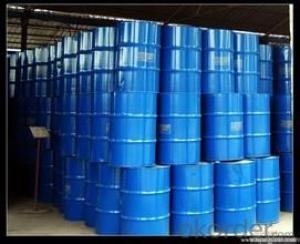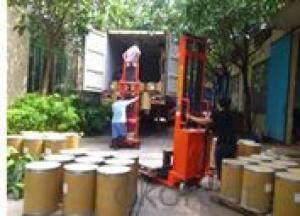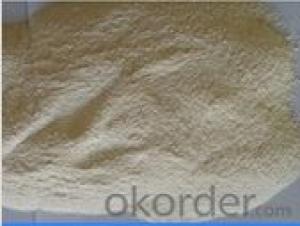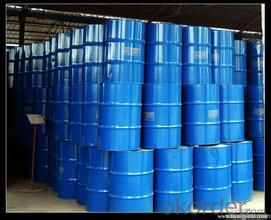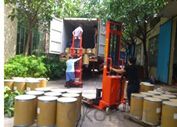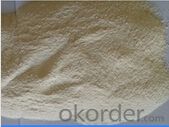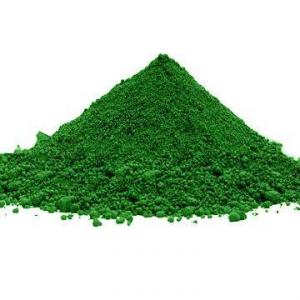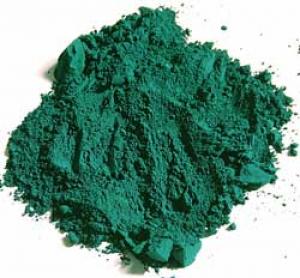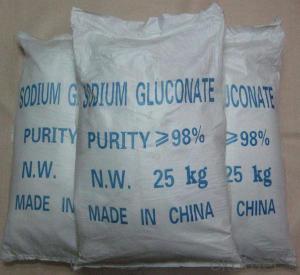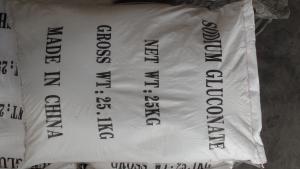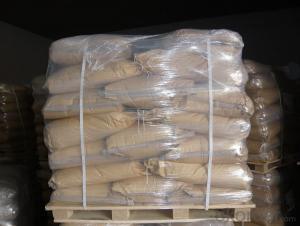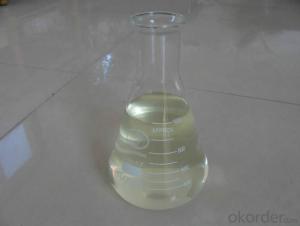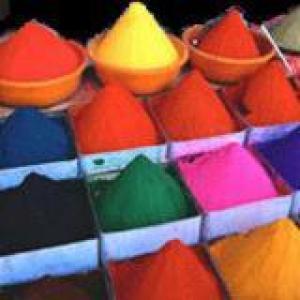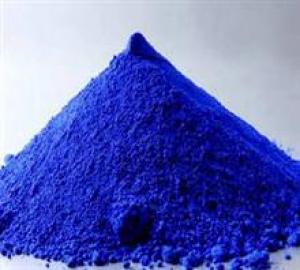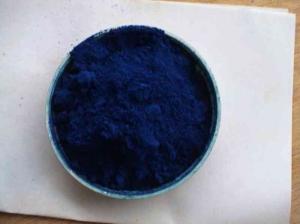Sodium gluconate textile chemicals about additive for concrete
- Loading Port:
- Shanghai
- Payment Terms:
- TT OR LC
- Min Order Qty:
- 1 bottle
- Supply Capability:
- 10000 bottle/month
OKorder Service Pledge
OKorder Financial Service
You Might Also Like
Introduction:
White or light yellow crystalline granular or powder, easily soluble in water, slightly soluble in alcohol,
insoluble in ether.
Sodium gluconate textile chemicals about additive for concrete is sodium salt of gluconic
acid that is produced by the fermentation of glucose, It is soluble in water, non corrosive,
non toxic, biodegradable.
•Usage:
Cement concrete additives about sodium gluconate is widely used in textile dyeing, printing and
metal surface water treatment, chelating agent, steel surface cleaning agent, cleaning agent for glass bottle, chelating agent for cement, plating and alumina dyeing industries. Besides it can be used as concrete admixture, cement retarder, corrosion inhibitor in concrete industrial.
Advantage
1.Used as a water reducing agent and retarder in concrete engineering.
2.Excellent scale and corrosion inhibitor, is widely used in water quality stabilizer.
3.Used as chelating agent in textile dyeing and printing, metal surface treatment, water treatment and other industries.
4.As chelating agent for cement, plating and alumina dyeing industries.
5.Used as a steel surface cleaning agent, glass bottle washing agent, electroplating industrial
alumina coloring.
- Q: Why do plants contain so many pigments?
- Typically most plants only contain chlorophyll which is green. Which plants are you referring to?
- Q: I want to find bright colored eye pigments much like macs. However I dont want to spend tons of money. Does anyone know of a place that sells inexpensive eyeshadow pigments?
- Go okorder
- Q: I am trying to decide what kind of eyeshadow I should but I want something really pigmented and nice.
- Highly Pigmented Eyeshadow
- Q: wut is the diff between those 2?
- pigments are a bright shimmery loose powder eyeshadows arent too shimmery but its pressed powder
- Q: i bought the new neon pro pigments from mac , well 5 out of the six and i also bought 'basic red'i want to use these as eye shadows but i dont know howi also bought mac mixing medium for face and body but lol , i dont know how to use any of this stuffwhat can i do to use this stuff i mean will it turn out like regular eyeshadow if i use it right? will there be a shine to it? it will reduce fall out? should i put the mixing medium on my eye first , then let dry?do i need to possibly press the pigments in a pot with some kind of eye shadow liquid?i also bought the mascara mixing medium but want to know exactly what to do with thatand also , can i mix any of the pigments with lipgloss?http://cn1.kaboodle /hi/img/2/0/0/119/a/AAAAAlrx1LUAAAAAARmgiA.jpg
- look on youtube they have all the answers!
- Q: i want to get mac melon pigment but i dont know what other eyeshadows to pair and blend it with. im looking for an everyday look. also what brushes to use with pigments?
- With the Melon pigment, I would recommend using warm, chocolate copper, bronze types of colors. It will provide a nice contrast to the melon while giving your eyes some added depth and definition. As far as brushes go, I like using the 252, large shader brush. This brush picks up pigment nicely and it has nice compressed/dense bristles so you can manipulate and lay the pigment down with greater ease. I like the #286 The dual fiber blending brush for pigments as well. It's made of natural fiber and synthetic fiber. This is a great brush because you really get 2 brushes in 1. With this 'blending' brush you can also use it for targeted color deposits and the synthetic fibers won't suck up what you just laid down and you will get a flawless, beautifully blended eyeshadow application.
- Q: what is the difference between light color and pigment colors?
- Check out the links below. They should answer any question about the properties of light. In a nutshell, the color of light is an electromagnetic radiation.that the human eye sees. The rainbow is a visual phenomenon that shows the transmission of those radiant colors. We see them all.. ,orange, yellow, green blue, indigo, violet at one time because they are being filtered through the moisture in the air. Of them all, only the primary colors are true colors.. , green and blue. The others are where the light blends together. Pigments are artificially produced things that bend light in such a way that we see a different color. A pigment reflects the available light, changes it because of its absorption property. Thats why black is both a color and the absence of color. In light, black is the combination of all colors (black absorbs all radiant light) and in pigment the absence of any color.
- Q: What are leaf Pigments?
- Pigments that are present in the leaf that impart colour to the leaf are called leaf pigments. They are chemical compounds. Green colour in plants is due to Chlorophyll. Cholorophyll are also of different types Chlorophyll-A, Chlorophyll-B, Chlorophyll-C and Chlorophyll-D. Different colours are imparted to plants by different pigments. Some are Xanthophyll and Carotenoids.
- Q: I was intrested in buying some pigments on ebay but they dont say the name they just say these nubers #68 #69 #93 do u no what pigment name they are u could serch it that might help thank you
- there's okorder / i couldnt find the numbers you're better off going to the store and asking
Send your message to us
Sodium gluconate textile chemicals about additive for concrete
- Loading Port:
- Shanghai
- Payment Terms:
- TT OR LC
- Min Order Qty:
- 1 bottle
- Supply Capability:
- 10000 bottle/month
OKorder Service Pledge
OKorder Financial Service
Similar products
Hot products
Hot Searches
Related keywords
